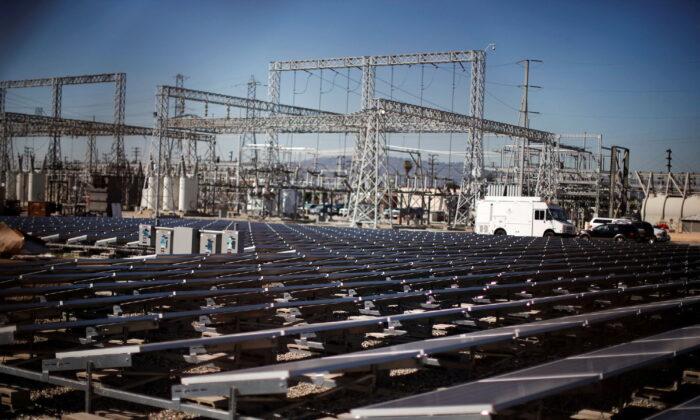Commentary
Inflation roils markets, especially labor markets. When inflation is reasonable, as it has been for four decades, families, companies, and governments more accurately can predict future costs and incomes. When inflation is unreasonable, calculations get scrambled.
Most employees today are not in labor unions, so they make their own arrangements with employers. But labor unions’ main function is to keep wages high for their members. Union membership has fallen from around 33 percent of workers in the 1950s to 11 percent today in the United States (16 percent in California). But organized labor still maintains power where it exists.
With inflation hitting
10 percent in February and higher, unions families are being slammed just the same as non-union families. So it’s understandable unions are starting to more often use a big, but unwieldy, weapon at their disposal: strikes.
However, management—whether private sector or government—itself is being hit with higher costs for fuel, other commodities and services. The Producer Price Index also rose 10 percent in February. Unions can only squeeze so much more from management.
Some recent developments:
Grocery workers at Ralphs and Albertson/Vons/Pavilions soon could go on
strike after their current contract expired on March 6. The walkout cold affect 47,000 workers. A
20-week strike from 2003-04 devastated the industry, including the workers, and the unions since then have been reluctant to risk another walkout of that duration. That strike helped increase sales at non-striking groceries such as Walmart, Trader Joe’s, and Whole Foods, the latter now owned by Amazon, showing how strikes sometimes backfire.
In the Bay Area, 500 Chevron steelworkers went on strike March 21,
according to the San Francisco Chronicle, “saying they need raises due to the extremely high cost of living.” They are demanding a “Bay Area pay bump” because that region is even more costly than the rest of California. The strike could crimp the production of gasoline, raising prices at the pump even higher.
The strike also raises the question of how middle-class jobs in California even can survive a super-high-cost environment. In this case, California’s unique demands for gasoline of a particular blend not seen elsewhere mean the liquid gold must be refined here instead of in Texas or Oklahoma.
On March 23, teachers and classified staff of the Sacramento Unified School District went on strike,
according to ABC 10 in Sacramento. A big existing problem,
according to David Fisher, president of Sacramento City Teachers Association, is the district already doesn’t have enough teachers on the job, with 10,000 students lacking a regular, everyday teacher in the classroom.
“For many of our students, schools have been closed at least intermittently all year because we don’t have enough educators to staff the school system,” he said.
The district wrote to parents March 18, “We have made the difficult decision to close all campuses if a strike takes place beginning on Wednesday, March 23, 2022.” More than 40,000 students were told to stay at home. It comes after the long COVID-19 closures of the past two years. In 2019, the Sacramento teachers went on
strike two times over similar staffing and pay issues.
I grew up in Detroit in the 1960s and 70s, where the threat of strikes against the Big Three auto companies always hung in the atmosphere. About 50 percent of all jobs were in the auto industry, or supporting it. In 1952, UAW President Walter Reuther worked out what was called the Peace of Detroit with the auto companies, granting substantial pay and benefit increases to workers in long-term contracts in exchange for them giving up some collective bargaining issues.
That peace began to break down in the mid-1960s when President Johnson’s vast spending increases for “guns and butter”—the Vietnam War and his Great Society welfare giveaways—started eroding the dollar’s value, sparking inflation.
In 1970, the UAW called a strike against General Motors that lasted 67 days. According to an
article from NPR written in 2007, “That same year [1970], more than 2 million American workers in various industries walked off the job. GM had deep enough coffers to weather a two-month strike and the UAW turned to the powerful Teamsters Union for financial support. In the end, the union prevailed, winning a 13 percent pay raise and other concessions.”
Although unions are not as powerful as 52 years ago, with inflation back, expect more strikes to come. The strikes will drive up costs even higher for companies and governments, leading to higher prices for products—and higher taxes for everyone. That’s how an inflation cycle spirals viciously upward.
Views expressed in this article are opinions of the author and do not necessarily reflect the views of The Epoch Times.





